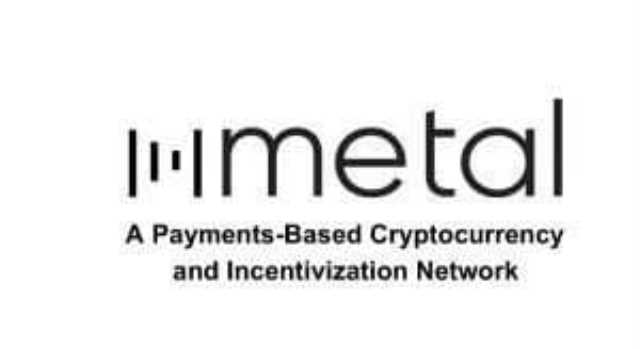For this reason, with such fierce competition, most Bitcoin miners work together as part of a mining pool. As part of the pool, they combine their hash rate with improving their odds of solving a block on Bitcoin’s blockchain. Early Bitcoin client versions allowed users to use their CPUs to mine. The advent of GPU mining made CPU mining financially unwise as the hashrate of the network grew to such a degree that the amount of bitcoins produced by CPU mining became lower than the cost of power to operate a CPU. The option was therefore removed from the core Bitcoin client’s user interface. Additionally, the miner is awarded the fees paid by users sending transactions.
What Was Bitcoin’s Lowest Price Ever?

The pioneering days of Bitcoin mining were marked by a spirit of ingenuity and resourcefulness, as early adopters sought to optimize the tools at their disposal. In those formative years, central processing units (CPUs) were the mainstay of mining operations, with individuals harnessing the power of their personal computers to participate in the nascent digital currency network. Yet, even in those early days, there were significant innovations within the realm of CPU mining that laid the groundwork for the mining landscape as we know it today.
Overcoming the difficulty. The era of video card mining
The team at CryptoVantage.com only recommends products and services that we would use ourselves and that we believe will provide value to our readers. We advocate for you to do your own research and make educated financial decisions. The foundations laid by these pioneers would go on to inspire countless innovations https://www.tokenexus.com/ in the field, driving the relentless pursuit of progress that has come to define the world of Bitcoin mining. On 11 November 2022 FTX filed for bankruptcy with an estimated $8 billion missing in customer funds. In June 2011, WikiLeaks[50] and other organizations began to accept bitcoins for donations.

How the Bitcoin Mining Process Works
In early 2024, bitcoin’s price jumped into the mid $40,000s as expectations grew for Bitcoin Spot ETFs‘ approval. By mid-February 2024, after the ETFs were approved, bitcoin’s price climbed to more than $50,000. After reaching a high of about $69,000 in November 2021, bitcoin’s price crashed in 2022. In March 2022, it was as high as $47,454, but by November, it was $15,731.
- One of the main challenges facing Bitcoin miners is the difficulty adjustment, which ensures that blocks are produced every 10 minutes on average, regardless of how much computing power is available.
- As the software evolved, it became increasingly user-friendly, allowing even those with limited technical knowledge to participate in the world of Bitcoin mining.
- In conclusion, the period following 2020 witnessed remarkable innovations and developments in the Bitcoin mining landscape.
- But even if you join a pool, you’re unlikely to get much without an ASIC.
- These chips represented a significant leap in efficiency, allowing miners to generate more hashes per second while consuming less energy.
The Difficulty Metric

If the hash and nonce generated by the miner are more than the target hash set by the network, the attempt fails, and the miner tries again. Many reputable economists recognize that the emergence of cryptocurrencies could be the starting point for a dramatic transformation of the entire global financial system. But financial technology is not the only area where Bitcoin has created an impetus for development and change. Mass protests break out in Kazakhstan after the government removes energy price caps, causing energy prices (and Bitcoin mining costs) to surge.
The client “mines” Bitcoins by running a program that solves a difficult mathematical problem in a file called a “block” received by all users on the Bitcoin network. The difficulty of the problem is adjusted bitcoin mining history so that, no matter how many people are mining Bitcoins, the problem is solved, on average, six times an hour. When a user solves the problem in a block, that user receives a certain number of Bitcoins.
Mining difficulty
One of the primary reasons people invest time and money in mining is for the reward of bitcoins, which, over time, have become very valuable. For example, on March 8, 2024, bitcoin’s price topped $70,000 for the first time, closing at $68,285. Therefore, at the close of trading, that reward was worth $426,781.25. The system is designed to evaluate and adjust the mining difficulty every 2,016 blocks or roughly every two weeks (based on the number of participants). This doesn’t always result in a blocktime of 10 minutes, but it’s close.
Concern for the environmental toll of creating new units of the world’s best-known cryptocurrency in a process called mining. An application-specific integrated circuit, or ASIC, is a microchip designed and manufactured for a very specific purpose. For the amount of power they consume, they are vastly faster than all previous technologies and already have made GPU mining financially. But because the reward halves over time and you’re competing with businesses that specialize in mining, the chance for profit continue to decline.
- This new breed of software enabled miners to optimize their systems and achieve higher mining efficiency.
- As more and more miners competed for the limited supply of blocks, individuals found that they were working for months without finding a block and receiving any reward for their mining efforts.
- As the industry continued to evolve, an increasing number of mining operations began seeking out locations with access to cheap and renewable energy sources, such as hydropower and geothermal energy.
- It can take a single miner a very long time to mine one Bitcoin, says William Szamosszegi, CEO of Bitcoin mining platform Sazmining, which connects individual retail miners with existing green Bitcoin mining facilities.
- You can also consider cloud mining, where you buy or lease hardware or rent computing power hosted by a third party.
- In May 2011, bitcoin payment processor, BitPay was founded to provide mobile checkout services to companies wanting to accept bitcoins as a form of payment.
- One such solution was the emergence of decentralized mining pools, such as P2Pool in 2011, which allowed miners to collaborate without a centralized pool operator[14].
- There were moments of slight upward movements, but they were met with subsequent declines, maintaining Bitcoin’s price within this bracket.
- After four days of rioting, on January 6, President Kassym-Jomart Tokayev blocked all internet access across Kazakhstan, ending Bitcoin mining nation-wide.
- Additionally, the miner is awarded the fees paid by users sending transactions.
In conclusion, the period between 2009 and 2015 was a time of remarkable growth and transformation for Bitcoin mining. From the advent of GPU mining to the rise of ASICs, the industry underwent a series of rapid and significant changes that would shape its future trajectory. The period between 2009 and 2015 was marked by a series of pivotal innovations and events that would shape the course of Bitcoin mining for years to come. One of the most significant milestones during this time was the transition from CPU to GPU mining in 2010. GPUs, or graphics processing units, were originally designed to handle the complex computations required for rendering graphics in video games.